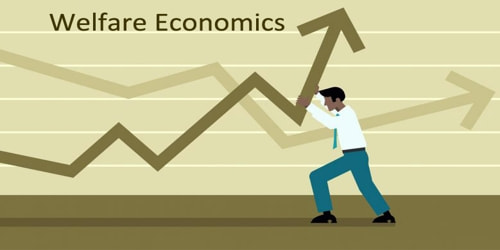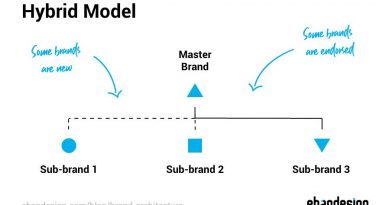Welfare Economics Explained Theory Assumptions and Criticism

Contents
- 1 Welfare Economics Explained: Theory, Assumptions, and Criticism
- 1.1 What Is Welfare Economics?
- 1.2 Understanding Welfare Economics
- 1.3 Pareto Efficiency
- 1.4 Social Welfare Maximization
- 1.5 How Is Economic Welfare Determined?
- 1.6 Criticism of Welfare Economics
- 1.7 What Is the First and Second Welfare Theorem?
- 1.8 What Are the Assumptions of Welfare Economics?
- 1.9 Who Is the Founder of Welfare Economics?
Welfare Economics Explained: Theory, Assumptions, and Criticism
What Is Welfare Economics?
Welfare economics studies how resource allocation and goods impact social welfare, economic efficiency, and income distribution, and their effects on overall well-being.
Welfare economists aim to guide public policy to achieve beneficial social and economic outcomes for society. However, welfare economics depends on subjective assumptions about the definition, measurement, and comparison of welfare for individuals and society.
Key Takeaways
- Welfare economics studies how market structure and resource allocation determine overall societal well-being.
- Welfare economics evaluates the costs and benefits of economic changes and guides public policy to increase societal welfare, using cost-benefit analysis and social welfare functions.
- Welfare economics relies on assumptions about the measurability and comparability of human welfare and incorporates ethical considerations about well-being.
Understanding Welfare Economics
Welfare economics applies utility theory in microeconomics. Utility represents the value of a good or service. Individuals maximize their utility through actions and consumption choices, and market interactions create consumer and producer surplus.
A microeconomic comparison of consumer and producer surplus in different market structures forms the basis of welfare economics. Essentially, welfare economics asks, "Which structures and resource allocations maximize overall utility or consumer and producer surplus?" It seeks the economic state that generates the highest social satisfaction.
Pareto Efficiency
The analysis of microeconomics leads to Pareto efficiency as an ideal in welfare economics. When an economy is Pareto efficient, social welfare is maximized because no resources can be reallocated to benefit one person without making someone else worse off. Economic policy aims to move the economy towards Pareto efficiency.
To determine whether proposed market changes or public policies move the economy towards Pareto efficiency, economists employ various criteria that estimate whether the gains outweigh the losses. These criteria include the Hicks, Kaldor, Scitovsky (Kaldor-Hicks), and Buchanan principles.
Cost-benefit analysis assumes utility gains and losses can be expressed in monetary terms. It either excludes equity issues or assumes the status quo represents an ideal on these matters.
Social Welfare Maximization
Pareto efficiency does not prescribe a specific economic arrangement. Multiple Pareto efficient wealth, income, and production distributions are possible. Welfare economics uses social welfare functions to determine arrangements that maximize social welfare.
Results from social welfare analysis depend on assumptions about adding or comparing utility between individuals and ethical considerations. These functions factor in fairness, justice, and rights but make welfare economics subjective and potentially contentious.
How Is Economic Welfare Determined?
Pareto efficiency determines optimal welfare when markets reach equilibrium prices, maximizing consumer and producer surpluses.
Modern welfare economics incorporates notions of justice, rights, and equality in the market. In some cases, "efficient" markets may not achieve the greatest social good.
For example, welfare economists might argue in favor of a higher minimum wage, even if it reduces producer surplus, if they believe it benefits low-wage workers more than the economic loss to employers.
Normative economists measure the desirability of "public goods" not paid for on the open market, such as improvements to air quality through government regulations.
Measuring the social utility of outcomes is imprecise, but economists use tools like surveys and cost-benefit analyses to gauge preferences and the value of goods.
Welfare economics also applies cost-benefit analysis to assess projects’ social impact. For example, when evaluating a new sports arena, planners balance benefits to fans and team owners with costs to affected businesses and homeowners.
Criticism of Welfare Economics
Welfare economics faces criticism for the challenge of making accurate interpersonal utility comparisons. Determining whether minimum wage laws benefit low-skill workers without harming employers or certain employees is difficult.
Detractors argue that comparing the value different consumers assign to goods is impractical due to the lack of objective measurements. The "Impossibility Theorem" suggests deducing social preferences by aggregating individual rankings is inherently flawed.
These criticisms have affected welfare economics’ popularity, but adherents consider economics a moral science.
What Is the First and Second Welfare Theorem?
Welfare economics is associated with two main theorems. The first states that competitive markets yield Pareto efficient outcomes. The second states that social welfare can be maximized at an equilibrium with suitable redistribution.
What Are the Assumptions of Welfare Economics?
Welfare economics evaluates economic policies’ impact on community well-being and is based on assumptions, primarily accepting individual preferences as given.
Who Is the Founder of Welfare Economics?
Welfare economics credits contributions to economists such as Alfred Marshall, Vilfredo Pareto, and Arthur C. Pigou. The main ideas trace back to Adam Smith and Jeremy Bentham’s theories.


